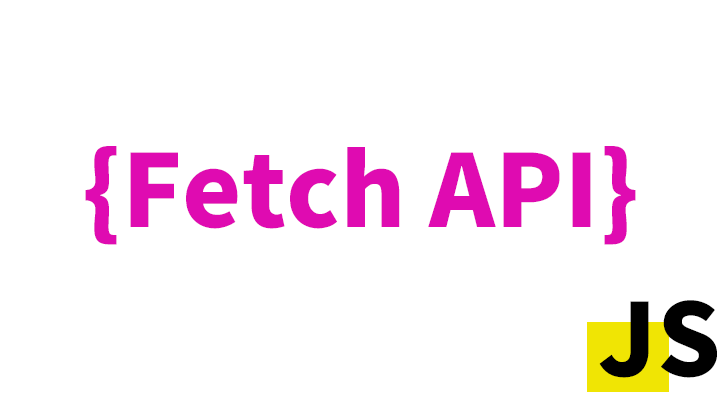React的主要作用是取代了原生DOM,让我们操作网页的方式变得更加简单。但是React中并没有为我们提供向服务器中发送请求的方法(因为这本来就不是它所关注的事情)。所以在React中发送请求的方式和传统项目其实是一致的,无非就是使用浏览器自带的Ajax、Fetch或者是类似于Axios的第三方框架。这也就意味着在React中发送请求的方式其实是非常灵活的,你完全可以根据自己的习惯选择一种你喜欢的方式。
Fetch API
Fetch是浏览器中自带的一种发送请求的方式,它是Ajax的升级版,相较于Ajax来说它使用起来更加方便,代码也更加简洁清晰。
发送get请求
fetch(resource)使用fetch发送get请求时,只需要将请求地址作为参数即可。
fetch('http://localhost:1337/api/students')
API地址是我们前边课程中通过Strapi定义的地址。和传统的Ajax不同,fetch返回的是一个promise,所以我们不需要再去监听响应返回的事件只需在fetch后调用then()方法即可。
fetch('http://localhost:1337/api/students')
.then(res => //res是响应信息 )
当请求发送成功后,fetch会自动调用then中的回调函数,回调函数的第一个参数就是服务器返回的响应信息,这里我们用res表示(response的简写)。res中包含了全部的响应信息,这些信息中我们比较关心的是服务器返回的json数据,所以我们还需调用res的json()方法来获取res中的json数据,json()方法同样会返回一个promise,所以我们还需要接着then,像是这样:
fetch('http://localhost:1337/api/students')
.then(res => res.json())
.then(data => console.log(data))
第二个then中的data,便是从res中解析到的数据,也就是服务器所发送的数据,它已经直接转换为了JS对象,数据结构和服务器中返回的数据一致:
{
"data": [
{
"id": 1,
"attributes": {
"name": "孙悟空",
"gender": "男",
"age": 18,
"address": "花果山",
"createdAt": "2022-05-16T10:05:10.538Z",
"updatedAt": "2022-05-16T10:05:34.201Z"
}
},
{
"id": 2,
"attributes": {
"name": "猪八戒",
"gender": "男",
"age": 28,
"address": "高老庄",
"createdAt": "2022-05-16T10:07:01.140Z",
"updatedAt": "2022-05-16T10:07:01.140Z"
}
},
{
"id": 3,
"attributes": {
"name": "沙和尚",
"gender": "男",
"age": 38,
"address": "流沙河",
"createdAt": "2022-05-16T10:15:51.303Z",
"updatedAt": "2022-05-16T10:15:51.303Z"
}
}
],
"meta": {
"pagination": {
"page": 1,
"pageSize": 25,
"pageCount": 1,
"total": 3
}
}
}从服务器中加载到的数据比较多,我们使用时还需要对数据进行调整,使其变成我们需要的数据结构,我们还需要在最后调用catch,并在catch处理异常:
fetch('http://localhost:1337/api/students')
.then(
res => res.json())
.then(
data => {
const formatData = data.data.map(item => ({
id:item.id,
name:item.attributes.name,
age:item.attributes.age,
gender:item.attributes.gender,
address:item.attributes.address,
}));
console.log(formatData);
})
.catch(err => console.log(err));其他类型请求
发送其他类型请求时,除了要指定请求地址外,还要传递第二个参数来设置请求的信息:
fetch(resource, init)init对象就是用来设置请求信息的,常用的属性有method用来设置请求方法,headers用来设置请求头,body用来设置请求体。
例子:
发送delete请求:
fetch('http://localhost:1337/api/students/3',{
method:'delete'
})
.then(
res => res.json())
.then(
data => console.log(data))
.catch(err => console.log(err));
};
发送post请求:
fetch('http://localhost:1337/api/students', {
method: 'post',
headers: {
"Content-Type": 'application/json'
},
body: JSON.stringify({
data: {
name: '沙和尚',
age: 38,
gender: '男',
address: '流沙河'
}
})
})
.then(
res => res.json())
.then(
data => console.log(data))
.catch(err => console.log(err));
发送put请求:
fetch('http://localhost:1337/api/students/5', {
method: 'put',
headers: {
"Content-Type": 'application/json'
},
body: JSON.stringify({
data: {
age: 48,
}
})
})
.then(
res => res.json())
.then(
data => console.log(data))
.catch(err => console.log(err));









李老师,能否讲讲 axios、promise、fetch、xhs 这些都是啥关系啊?前后演进顺序是什么?我怎么感觉干的事情都差不多
promise是异步的工具。xhr也就是Ajax是早期发送异步请求的方式,基于事件的。fetch是新添加的发送请求的方式,基于Promise。前边三个都是系统原生支持的。axios是第三方的发送请求的工具。
总的来说,Ajax、Fetch、Axios都是发送请求的工具,Ajax和Fetch是原生的,Axios是第三方的。
正在计划有一个答疑的专栏,然后专门录一些答疑的视频
李老师您好,这个网站的评论功能的数据库结构和逻辑是如何设计的,可以分享一下吗?迫切想知道。
打卡
json()方法同样会返回一个promise,在链式调用中默认会返回一个Promise对象,而不是json()方法返回的